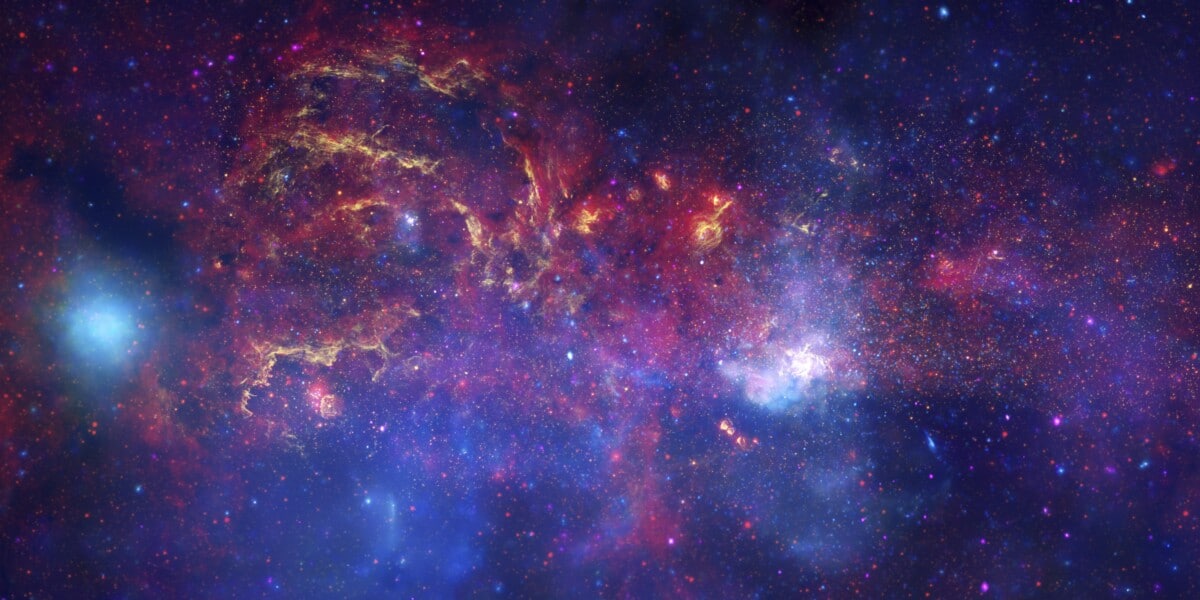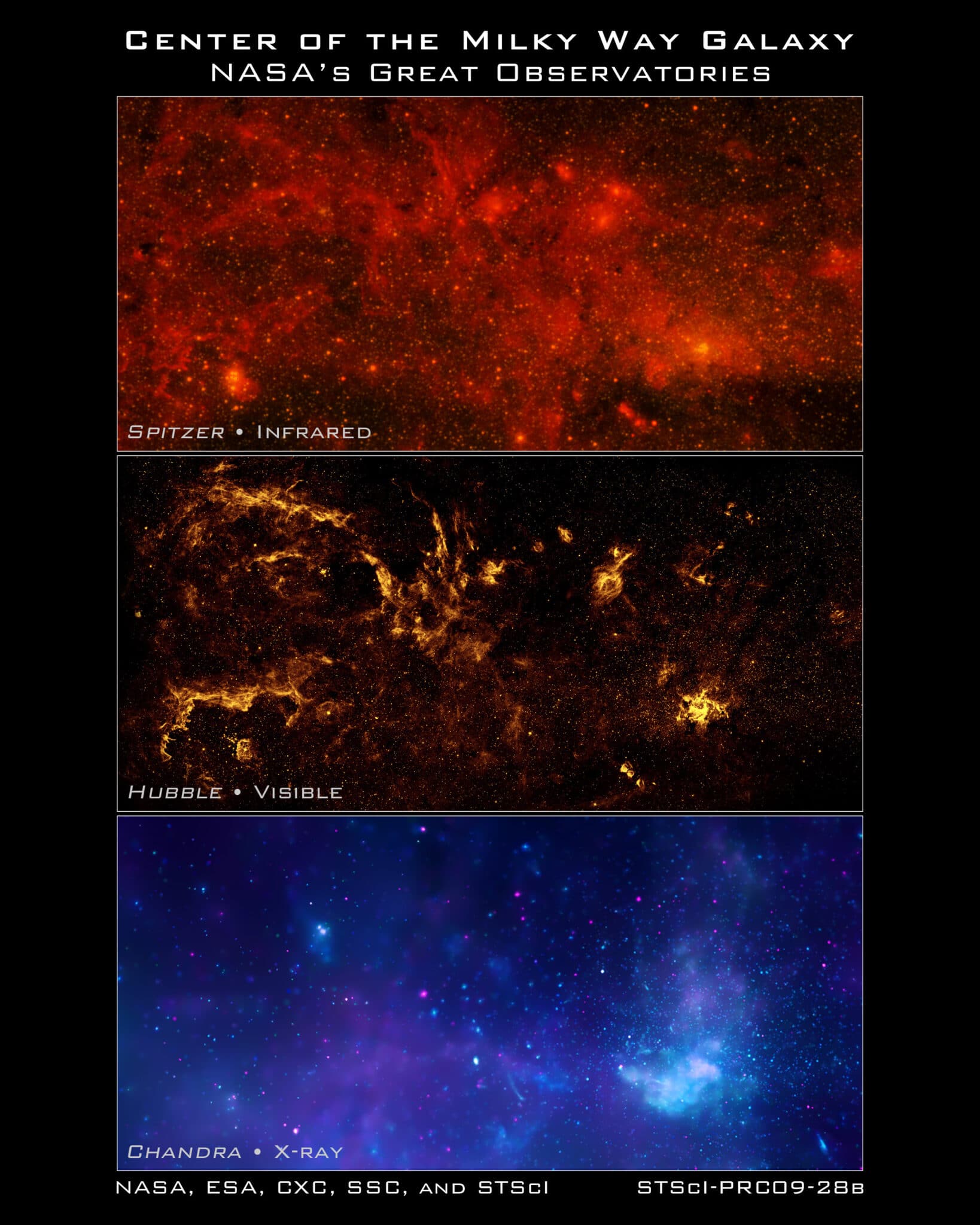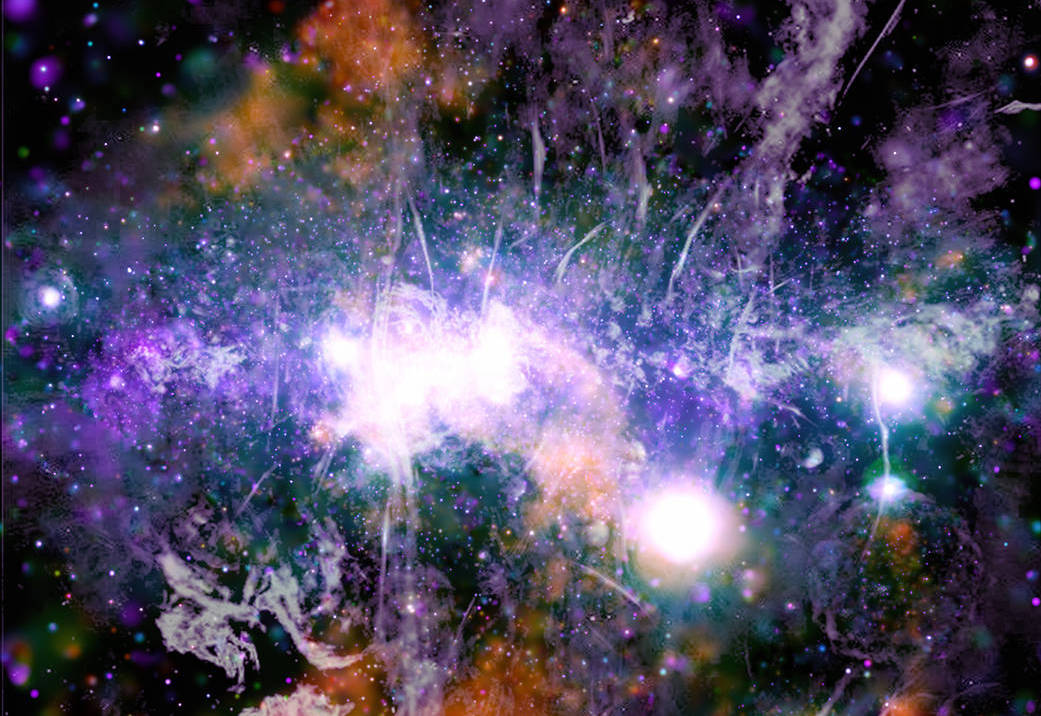
There is never a dull day in the center of our galaxy. This can be clearly seen in this 2009 composite image of the Hubble, Spitzer and Chandra telescopes.
At the center of our Milky Way is a huge black hole. This black hole is called Sagittarius A*. It is a relatively calm black hole, but from time to time Sagittarius A* wakes up. “For example, if there is a lump in the gas that he is guzzling,” says scientist Ian Heywood. “This then leads to a large eruption, creating giant bubbles.” These bubbles were photographed in 2019 by the MeerKAT telescope.
In addition, the black hole regularly becomes brighter, because more matter falls into the black hole. “Before the material disappears, it heats up and starts to radiate,” astrophysicist Rudy Wijnands tells Scientias.nl. “The amount of radiation we see is directly related to the amount of material falling into the black hole.”
The dynamic play of eruptions and colliding magnetic fields causes many new stars to be born near the center. Near the center is the four-million-year-old Quintuplet cluster that houses the famous Pistol Star, one of the brightest stars in the Milky Way.
…the sun revolves around the center of the Milky Way? One orbit lasts no less than 225 million years. Every 633.7 days – or 1.7361 years – the Earth moves one centi-arcsecond and we celebrate ‘Galactic Tick Day’. The next Galactic Tick Day is on December 15, 2021.
Fantastic collaboration
In 2009, the three large space telescopes Hubble, Spitzer and Chandra photographed the galactic center. The mosaic consists of three photos from different telescopes, which you can view here (or below). The Hubble telescope photographed the galactic center in visible light, the Spitzer telescope in infrared light and the Chandra telescope in X-ray light.

This is how Spitzer saw the gas clouds in which stars are born. Hubble was able to spot the warm gas clouds heated by giant stars. The image from the Chandra telescope shows exotic objects that give off X-rays. Hundreds of white dwarfs, neutron stars and stellar black holes revolve around the black hole at the center of the Milky Way. We can speak of a fantastic collaboration, because when the three photos are placed on top of each other, an impressive work of art is created.

Want to use this photo as a background photo on your computer? Download the photo in high resolution.
More often on the sensitive plate
The center of the Milky Way is regularly captured on the sensitive plate by (space) telescopes and satellites. Earlier this year, the American space agency NASA shared a special panoramic photo of the galactic center. The mosaic is the result of 370 Chandra sightings from 1999 to 2019. A total of 1,555 hours and 26 minutes of observations, which amounts to more than 64 days.
